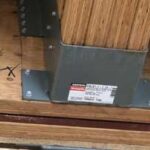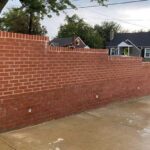Foundation repair
- Home
- portfolio
- Foundation repair
- Foundation repair
Foundation repair is crucial for maintaining the structural integrity of your home. Whether it’s minor cracks or significant damage, addressing foundation problems promptly can prevent further issues. Here’s a detailed guide on foundation repair:
Identifying Foundation Problems
Visible Cracks:
- Cracks in walls, floors, or the foundation itself.
- Horizontal cracks are often more serious than vertical ones.
Sticking Doors and Windows:
- Doors and windows that stick or do not close properly.
Uneven Floors:
- Floors that appear to slope or have noticeable dips.
Gaps and Separation:
- Gaps around window frames or exterior doors.
- Separation between walls and the ceiling or floor.
Water Issues:
- Water pooling around the foundation or in the basement.
- Damp or musty smells in the basement.
Causes of Foundation Problems
Soil Movement:
- Expansive clay soils that swell when wet and shrink when dry.
Poor Construction:
- Inadequate soil compaction or poor-quality materials used during construction.
Erosion:
- Water erosion from poor drainage or plumbing leaks.
Tree Roots:
- Roots from trees planted too close to the foundation.
Natural Disasters:
- Earthquakes, floods, or other natural events.
Foundation Repair Methods
Slab Jacking (Mudjacking):
- A grout mixture is pumped beneath a sunken concrete slab to lift it back to its original level.
- Effective for sunken driveways, sidewalks, and garage floors.
Steel Piers:
- Steel piers are driven deep into stable soil.
- Hydraulic jacks are used to lift and stabilize the foundation.
Helical Piers:
- Helical (screw) piers are screwed into the ground to provide support and lift.
- Suitable for both heavy and light loads.
Wall Anchors:
- Used to stabilize and straighten bowed or leaning basement walls.
- Anchors are installed in the ground outside the foundation and attached to the wall with steel rods.
Carbon Fiber Strips:
- Applied to basement walls to reinforce and prevent further cracking.
- Lightweight and minimally invasive solution.
Epoxy Injections:
- Used to repair and seal cracks in concrete foundations.
- Epoxy resin is injected into cracks to restore structural integrity.
Steps for Foundation Repair
Inspection and Assessment:
- Hire a professional structural engineer or foundation specialist to assess the extent of the damage.
- Determine the underlying cause of the foundation issues.
Choosing the Right Method:
- Based on the assessment, select the most appropriate repair method.
Preparation:
- Clear the area around the foundation.
- Obtain necessary permits and approvals.
Execution:
- Implement the chosen repair method.
- Monitor the process to ensure proper execution.
Post-Repair Monitoring:
- Regularly inspect the foundation and surrounding areas for signs of new or recurring issues.
- Maintain proper drainage and address any new concerns promptly.
Preventive Measures
Proper Drainage:
- Ensure gutters and downspouts direct water away from the foundation.
- Maintain proper grading around the foundation to prevent water pooling.
Soil Moisture Control:
- Use soaker hoses during dry periods to maintain consistent soil moisture levels.
- Avoid planting large trees or shrubs too close to the foundation.
Regular Inspections:
- Conduct routine inspections of your foundation, both inside and outside.
- Address minor issues before they become major problems.
Professional Maintenance:
- Schedule periodic professional inspections and maintenance.
Conclusion
Foundation repair is essential to preserving the safety and value of your home. By identifying problems early, choosing the right repair methods, and implementing preventive measures, you can ensure a stable and secure foundation for years to come.



